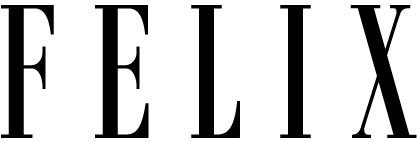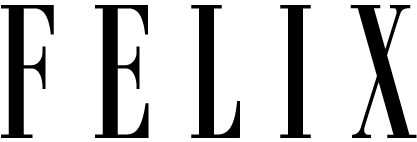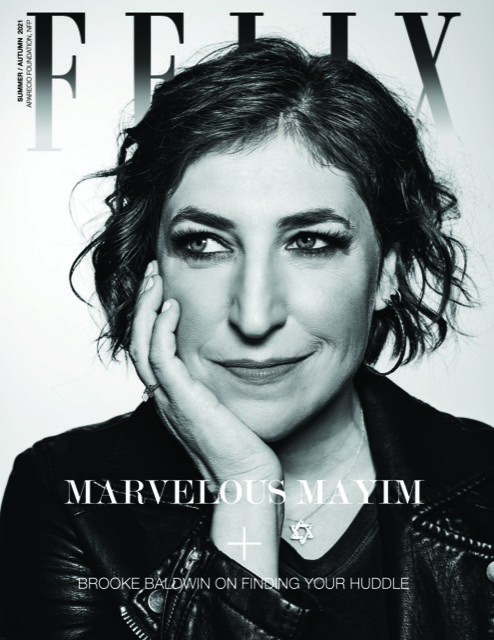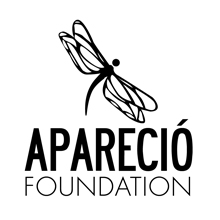Unpacking Photography, Magazines, and Avedon at American History
Unpacking Photography, Magazines, and Avedon at American History
Unpacking Photography, Magazines, and Avedon at American History
Unpacking Photography, Magazines, and Avedon at American History
Unpacking Photography, Magazines, and Avedon at American History
Unpacking Photography, Magazines, and Avedon at American History
Unpacking Photography, Magazines, and Avedon at American History
“(re) Framing Conversations: Photographs by Richard Avedon, 1946–1965” is open to the public at Smithsonian’s National Museum of American History. Twenty Richard Avedon images spanning two decades, curated from the Smithsonian’s extensive photo history collection will be exhibited through fall 2023.
Magazines are magical. The sheen and dramatic cover designs stop us in our tracks. The ability to hold the text and photographs close is intimate, even if just for a moment. This is especially true today when so much of our text and photographic experiences are digital, fast, and ephemeral. (re)Framing Conversations: Photographs by Richard Avedon 1946-1965 at the Smithsonian’s National Museum of American History (NMAH), explores the power of photography in magazines through iconic portraits.
Mid-twentieth-century photography in magazines was dynamic. Some photographers and photo editors embraced a strikingly modern image that emphasized formality and ideas over sentiment. Beginning in 1946, Richard Avedon at Harper’s Bazaar participated in and influenced this changing visual landscape. The power and pleasure of magazines was at its height in post-WWII America. Life, Saturday Evening Post, Time, and more kept Americans and others around the world in a state of shared, if not controlled, information. Before the stronghold of television and today’s digital sources, magazines were essential to shaping American culture. They accumulated in living rooms and doctors’ offices, took up retail space, and provided common points of conversations. Photographs were as important as the texts. They were integral to cover art, advertising, illustration, fashion, featured portraits, news, travel, and documentary photo essays.
Magazines were also important to forming Avedon’s popularity in the first decades of his career. Mostly known now in some fashion and fine art contexts, it’s easy to forget that he was a superstar in the public’s eye. When his own career hit celebrity status, he served as inspiration for Fred Astaire’s character of Dick Avery (Dick Avery=Dick Avedon) in the 1957 film Funny Face, with Audrey Hepburn. Avedon’s name is associated with the film as a technical director and his photographs can be seen throughout, especially in the photo editor’s office and in the dark room scenes.
In Avedon’s his first exhibition at the Smithsonian in 1962, the photographs were push-pinned to wall. No framing or glazing! The design of the show created a dynamic experience forcing visitors to step close and move away to see the photographs through combinations of large and small prints. Visual and psychological tensions in the exhibition were accentuated by placing images of beaty and death, age and youth, and other types of juxtapositions together. We can see this also in his books Observations (1959) with Truman Capote and Nothing Personal (1964) with James Baldwin. Some of the photographs in the exhibition appeared in these publications.
NMAH acquired the April 1963 issue of Harper’s Bazaar to put on display highlighting Avedon’s portrait of James Baldwin that accompanies Baldwin’s essay, “Letter from a Prisoner.” Holding the magazine in my lap, with Baldwin’s expectant gaze on the right and printed full-bleed, and his words directed at me, the reader, he writes, “It doesn’t do any good to blame the people or the time—one is, oneself, all those people. We are the time.”
We are the time,” (his emphasis) struck me deeply. Baldwin calls for individual accountability. Baldwin’s platform was words; Avedon’s photography. As a curator, what is my accountability and what is my platform? This is a question I’ve always taken seriously, but almost sixty years since Baldwin’s essay appeared, this notion that WE (my emphasis) “are the time” rang deeply, especially as staff of a museum whose mission is “Empowering people to create a just and compassionate future by exploring, preserving, and sharing the complexity of our past.” With this exhibition of Avedon’s photographs at a national history museum, I hope we can untangle some of historical players, reflect on their impact and invite contemplation on how we as individuals can shape culture now.
Leaning on Avedon’s practice of placing portraits in visual and even ideological tension, NMAH’s exhibition groups his photographs by threes and fours into six sections. The photographs on display were printed and dry mounted on 28X28 inch black boards by the photographer for two gifts to the Smithsonian in the mid-1960s that added to his first gift of the whole of his first one-man show. The photographs on view in (re)Framing Conversations presents twenty portraits among a swirl of visual and historical contexts. By placing portraits in proximity with each other, we can lift up conversations, tensions, and issues that are visible through Avedon’s portraits.
For example, William Casby, born into slavery is sandwiched between the segregationist Alabama Governor, George Wallace and the racist Louisiana judge, Leander Perez. Avedon depicted all of these men in 1963. That is not an accident. Nearly everyone knew of the discussions building towards what we now call the Civil Rights Act of 1964. The second half of Avedon’s title for the photograph of Casby directs us to understand that the white supremacist state in which he emerged had not diminished. Those who held legislative and judicial power created governmental structures to retain unequal and unjust political and economic frameworks.
To that mid-century mantra, form equals function, we can see how Avedon’s aesthetic leads us to understand something about his subjects. He has stripped away any informational or background context. His subjects represent themselves without the aid of conventional portraiture niceties of lovely lighting and lush settings. The viewer is not given extra information and is forced to engage directly with those depicted to decipher and create meaning. It’s often not pretty.
Many of his subjects are practiced at performing in front of the camera. Avedon’s ability to slip under and pull off those shields to show us aging skin, emotions, attitudes, and psychological states of his subjects is a benchmark in the history portraiture. Shedding the fashion photographer’s impulse to tip towards flattering lighting and gracious moments in the edit, Avedon takes a hard look at their humanness (the humanity of some might be called into question).
Each of the six groupings of Avedon photographs in the exhibition is paired with a question. In “How long does change take?”, the intensity of the question is one that is meant to be asked of each visitor and wrestled with as much as one might. We know there is no singular easy answer. But the wrestling and questioning is valuable to locating oneself in history and culture.
I had the extraordinary pleasure to interview Anna Deavere Smith once. She told me one of the questions you can use to really get to someone is ask them whether they have ever been falsely accused of something. I thought about that when putting together the section, “What do we have to fear?,” The hurling of accusations and calling someone a “communist,” like it is more foul than four-letter word, caused many to go into hyper defense mode, be angry, and/or retreat, but almost all suffered in some way to the question “Are you now or have you ever been a member of the communist party?”.
McCarthyism and Hollywood blacklisting began in 1947 with the House Committee on Un-American Activities (more popularly, though inaccurately, known as HUAC, the House Un-American Activities Committee) that called actors, directors, screenwriters and playwrights, singers, radio commentators, and others like baseball hero Jackie Robinson to the Capitol to defend themselves against accusations of disloyalty to the United States, and to testify about colleagues also suspected or accused of being communists. In (re)Framing Conversations, we focus on John Huston, Charlie Chaplin, and Humphrey Bogart to illuminate the intersections of politics, Hollywood, celebrity, and culture.
Best known today for his leading role in the movie, Casablanca, Humphrey Bogart, and his friend and sometimes professional colleague, screenwriter and filmmaker John Huston, participated in the Committee for the First Amendment. It was meant to be, a network of stars who criticized HUAC and defended those first ten witnesses. Membership included Lucille Ball, Groucho Marx, and Judy Garland. After a star-studded protest in Washington, DC, in the fall of 1947, and two radio broadcasts titled Hollywood Fights Back, HUAC painted the new committee as communist sympathizers and dug up evidence that at least one had briefly joined the Communist Party. The group then disbanded having had little affirmative effect.
Huston grew increasingly disgusted by McCarthyism’s impact and moved to Ireland in 1952. Avedon’s photograph of Huston in 1956 is at the release of Moby Dick. Huston’s version of a vengeful Captain Ahab relentlessly chasing the white whale offers a subversive commentary on the obsessiveness of McCarthyism.
The morning of September 18, 1952, before sailing to Britain for a film premiere, Chaplin visited Avedon’s studio. In a last-minute gesture before leaving the studio, Chaplin posed with his fingers at the side of his head like devil’s horns, referencing how he was depicted by McCarthy and Hollywood gossip. The next day, the US attorney general announced an inquiry into Chaplin’s political beliefs that kept him from returning to the United States for two decades.
Women, too, were targeted. Dorothy Parker, included in the exhibition section, “Where do we find women’s words?,” helped found and chair antifascist organizations the FBI labeled as “communist fronts” and was active in a variety of liberal causes with Jewish and LGBTQ friends whose identities alone aroused HUAC’s suspicion. She left the New Yorker for Hollywood to write screenplays, for which she was an Oscar nominee in the 1930s, but she was blacklisted by 1949, and her screenwriting career never recovered. When Avedon photographed Parker in 1958, she was writing book reviews for Esquire magazine.
Avedon’s powerful portraits provide NMAH’s visitors a chance to reflect on the idea that the American culture we contend with today has a link to humans with dogmas, hurts, pains, and joys of a previous era. But, as Baldwin noted, “we are the time” and it is up to each of us to decide how we bring our fragile selves to the table to move the needle.
Shannon Perich is the Curator of the Photographic History Collection at the National Museum of American History. Since 1896, she is one of only seven to hold the title.


















